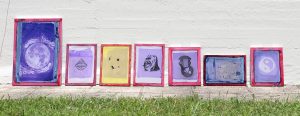Proven advice for industrial applications and other situations where delivering less-than-flawless prints isn’t an option.
MIKE YOUNG, ASDPT* - IMAGETEK CONSULTING
Secret #3: Control the Tension
In virtually every functional and demanding application, using screens with a commensurable tension has a direct influence on the outcome. Suppliers advocate tension as a crucial prerequisite for success, but such guidance frequently falls through the cracks where it matters the most – in the screenroom. The problem is often twofold: The screens weren’t initially tensioned to the recommended level for the task, and inadequate steps were taken to minimize the substantial tension loss that occurs through continued use. In my experience, simply upping screen tension can instantly take a plant’s performance to a higher plateau with ease.
High screen tension dramatically reduces printing difficulties. No one suggests going beyond suppliers’ recommendations, but consider approaching the highest tension level they advise. Some screen makers complain that it is impossible to reach these levels, at least consistently – which indicates that their existing procedures aren’t working! With stretch and glue frames, follow the stretching system’s instructions carefully after ensuring the equipment and clamps are in good working order. The same applies to retensionable frames: Be sure they are properly maintained and are used consistently rather than everyone doing it their own way. Better yet, send personnel to the supplier’s training courses or have sessions conducted in-house.
Just as important as the tension level is the need to minimize tension loss from what’s known as work hardening. This is a term that explains why fabrics lose tension due to the natural forces of printing. Always leave newly stretched mesh to rest for at least 30 minutes before gluing or finalizing with retensionables. Afterward, it is a good practice to allow screens to rest at least a whole day before prepping them for coating, so that the fabric has a chance to reorient. Allowing this process to occur after the screen has been imaged or, worse, on press does no favors for anyone. The difference is night and day; well-made screens coated after this waiting period will experience only slight tension loss during production.
Some printing operations find it beneficial to allow two days before proceeding, particularly with larger screens (anything with images larger than 20 x 30 inches). If someone objects that there are not enough screens to implement this practice, then buy more. It’s very cost-effective when compared to constantly throwing money down the drain dumping nonshippable prints, to say nothing about the expensive materials and production time lost forever.



